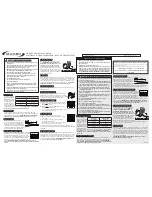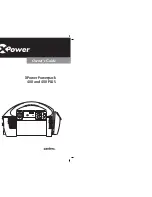
www.pulsar.pl
PSBEN2012B/LCD
BLACK POWER
15
5.4.3
LCD screen
– current failures
In case of abnormal electrical parameters during the operation, the PSU will indicate a failure by displaying a
message on the LCD, turning on the red LED
on the panel, activating acoustic indication (if enabled)
and changing the status of a dedicated technical output.
Fig. 9. Message indicating blown fuse at the AUX output.
At a given time, multiple failures can occur. To check which faults are indicated, choose the current failures of
the PSU screen.
To do that, press the „ESC” button, use the „<” or „>” buttons to choose the
icon and press the „SET”
button to confirm..
Fig. 10. LCD screen
– current failures of the PSU.
The screen displays the codes and descriptions of failures. The display order of failures is arranged by priority
of importance. The first failures in the display order are of the highest priority.
If there are more than five failures at the same time,
use the „<” or „>” buttons to display the next failure..
5.4.4
LCD screen
– history of the parameters
To set the screen, press the „ESC” button, use the „<” or „>” buttons to choose the
icon and press the
„SET” button to confirm..
Fig. 11.
Screen of the history of PSU’s parameters.
During normal operation, the PSU records voltage and current parameters at the output circuits and saves
them in the internal non-volatile memory. The saving is repeated in 5 minutes intervals and the internal memory
can store up to about 6144 values. The memory works in a circular cycle - when the memory is full, the oldest
entries are replaced with the newest ones.
The screen of the parameters history enables reading of the stored parameters and scanning the values on
a chart. The screen features a time axis, located horizontally in the bottom part of the chart, and a
parameter axis, located vertically in the left. Use the „<” or „>” buttons to move the cursor into various time points
and read the value of the measurement..
















































